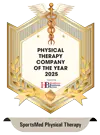What is Spinal Stenosis?
The center of the spine houses the spinal cord. Spinal stenosis results when the spinal canal narrows. If the space is narrowed (stenosis) pressure can be placed on the spinal cord or the nerves coming out of it, which can cause pain. As with many spinal injuries, it most often occurs in the neck (cervical) or lower back (lumbar) regions.
Symptoms of Spinal Stenosis
The symptoms for stenosis vary greatly, In some cases, a stenosis will cause no pain. In others, the pain experienced will depend on the location of the stenosis.
Cervical Stenosis
- Numbness/Tingling/Weakness in leg, foot, arm, or hand
- Problems walking
- Problems with balance
- Incontinence
Lumbar Stenosis
- Pain/Cramping in legs
- Sciatica
- Low Back pain
Causes of Spinal Stenosis
Some people have a naturally smaller spinal canal that has the potential to cause problems later in life, but usually a stenosis follows an event such as:
- Bone Spurs in the spine
- Disc Herniation
- Tumors
- Fractures/Dislocations as a result of trauma(such as a car accident)
- Aging
Treatment for Spinal Stenosis
After a diagnosis, tests should be done to determine the severity of the stenosis so a proper prognosis can be formed. There are several different treatments, many of which are non-surgical (preferable) such as:
- Spinal Decompression Therapy
- Resistance exercises to strengthen the muscles around the spine
- Medications
- Epidural Injections
In need of Spinal Stenosis therapy? Schedule an Appointment Today!
If you have any questions, or want a consultation with a professional, feel free to call, or schedule an appointment online at any of our Bergen County or Passaic County offices in New Jersey. Choose from Glen Rock, Franklin Lakes, Fair Lawn, Ho-ho-kus/Ridgewood, and/or Clifton – we make it possible for you to visit any of our offices at your convenience.
If non-surgical methods do not provide relief, a laminectomy or laminotomy may be recommended. A laminectomy or laminotomy is a surgical procedure where a part of the vertebral bone called the lamina is partially (laminotomy) or entirely (laminectomy) removed to eliminate the pressure to the spinal cord or nerves. In some cases, a lamioplasty may be performed instead which places a hinge to open up space for the spinal cord instead of removing the lamina. A lamioplasty, allows for more stability and movement and can eliminate the need for future operations to stabilize the spine.
Do you suffer from Spinal Stenosis? Contact Us To Schedule An Appointment Today.



